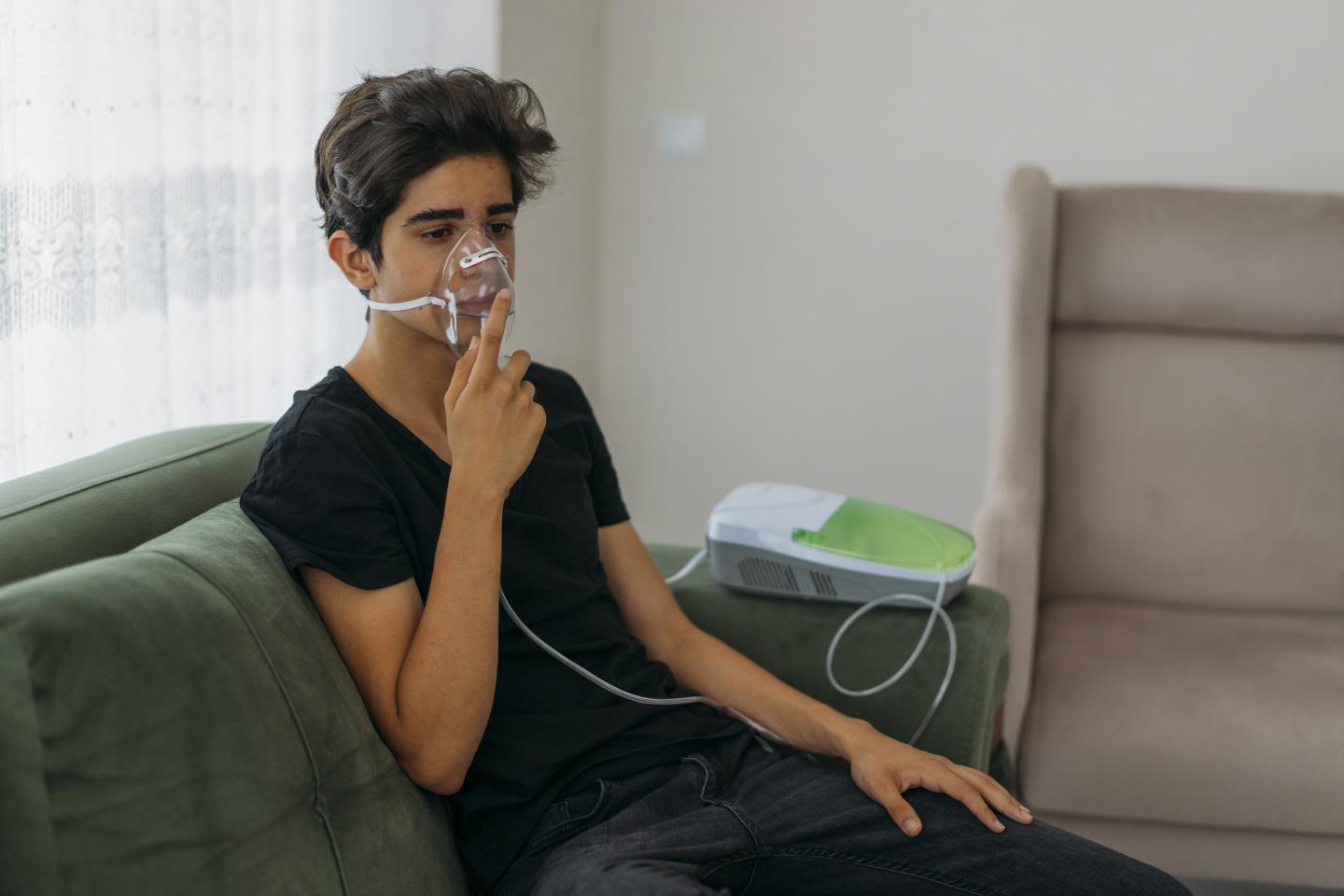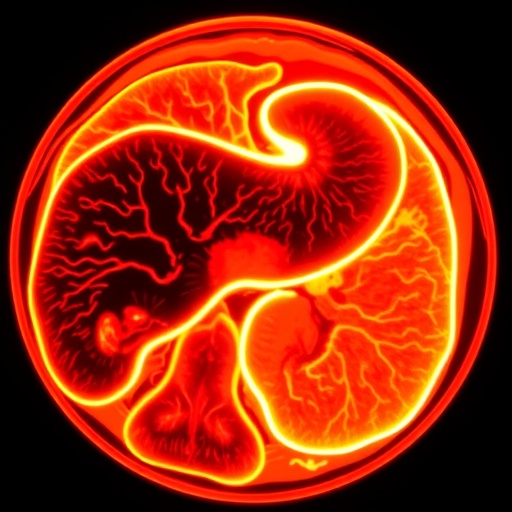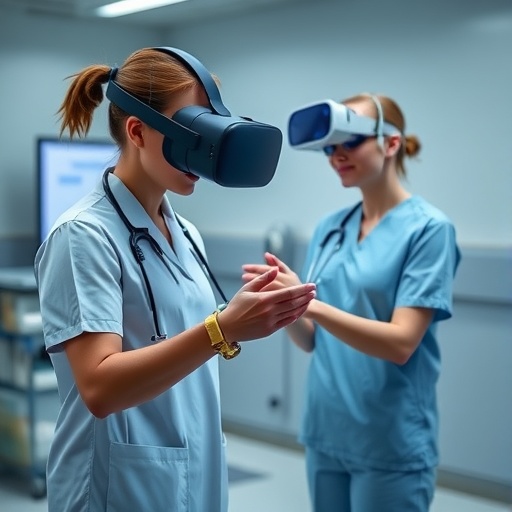
Credit: ATS
Feb. 1, 2019–The American Thoracic Society has developed a new clinical practice guideline for home oxygen therapy for children. The guideline appears in the Feb. 1 edition of the Society’s American Journal of Respiratory and Critical Care Medicine.
“Home Oxygen Therapy for Children: An Official American Thoracic Society Clinical Practice Guideline” makes specific recommendations for treating chronic hypoxemia in children with cystic fibrosis, bronchopulmonary dysplasia, sleep disturbed breathing, sickle cell disease, pulmonary hypertension with and without congenital heart disease and interstitial lung disease.
“Home oxygen is often needed for children with chronic lung and pulmonary vascular diseases,” said lead author Don Hayes, Jr., MD, MS, MEd, medical director of the Advanced Lung Disease Program at Nationwide Children’s Hospital in Columbus, Ohio, and co-chair of the working group organized by the ATS Assembly on Pediatrics. “However, there is a striking lack of empirical evidence regarding its implementation, monitoring and discontinuation in children. These guidelines, developed by a panel of highly respected experts, offer an evidence-based approach to using home oxygen to benefit pediatric patients.”
The 22-member guideline panel of experts in pediatric and neonatal medicine, respiratory therapy, nursing and population health, as well as parents, wrote that chronic hypoxemia can lead to pulmonary hypertension, delays in cognitive and behavioral development, poor sleep and stunted growth.
Based on a systematic literature review, the panel defined chronic hypoxemia as lasting two weeks and diagnosed through pulse oximetry:
- In children under the age of one, as spending five percent of the recording time with peripheral capillary oxygen saturation (SpO2) ?90 percent, or, if measurements are taken intermittently, of obtaining three independent measurements of SpO2 ?90 percent.
- In children one and older, as spending five percent of the time with SpO2 ?93 percent, or, if measurements are taken intermittently, of obtaining three independent measurements of SpO2 ?93 percent.
Before making their recommendations, the panel reviewed available studies and other clinical practice guidelines. They relied heavily on their own clinical experience because of the paucity of high-quality studies. The panel noted that, in some instances, studies to test the benefit of oxygen therapy would never be conducted because it would likely be deemed unethical to withhold oxygen from study participants.
The panel rated the strength of study findings, along with the certainty of the panel’s recommendations, using the GRADE (Grading of Recommendations, Assessment, Development and Evaluation) system. When the panel relied heavily on their clinical observations, rather than systematic studies, GRADE required them to make their recommendations with “very low confidence.”
In summary, the guideline recommendations are:
Cystic fibrosis
- For patients with cystic fibrosis complicated by severe chronic hypoxemia, we recommend that home oxygen therapy be prescribed (strong recommendation, very low quality evidence).
- For patients with cystic fibrosis who have both mild hypoxemia and dyspnea on exertion, we suggest that home oxygen therapy be prescribed (conditional recommendation, very low quality evidence).
Bronchopulmonary dysplasia
- For patients with bronchopulmonary dysplasia complicated by chronic hypoxemia, we recommend that home oxygen therapy be prescribed (strong recommendation, very low quality evidence).
Sleep-disordered breathing
- For patients with sleep-disordered breathing complicated by severe nocturnal hypoxemia who cannot tolerate positive airway pressure therapy or are awaiting surgical treatment of sleep-disordered breathing, we suggest that home oxygen therapy may be prescribed (conditional recommendation, very low quality evidence).
Sickle cell disease
- For patients with sickle cell disease complicated by severe chronic hypoxemia, we suggest that home oxygen therapy be prescribed (conditional recommendation, very low quality evidence).
Pulmonary hypertension without congenital heart disease
- For patients with pulmonary hypertension without congenital heart disease complicated by chronic hypoxemia, we recommend that home oxygen therapy be prescribed (strong recommendation, very low quality evidence)
.
Pulmonary hypertension with congenital heart disease
- For patients with pulmonary hypertension with congenital heart disease complicated by chronic hypoxemia, supplemental oxygen will impact hemodynamics and physiology; we recommend that home oxygen therapy NOT be initiated in these children, regardless of previous reparative or palliative congenital heart surgery, until there has been consultation with a pediatric pulmonologist or cardiologist who has expertise in the management of pulmonary hypertension in this clinical setting (strong recommendation, very low quality evidence).
Interstitial lung disease
- For patients with interstitial lung disease complicated by severe chronic hypoxemia, we recommend that home oxygen therapy be prescribed (strong recommendation, very low quality evidence).
- For patients with interstitial lung disease who have mild chronic hypoxemia and either dyspnea on exertion or desaturation during sleep or exertion, we suggest that home oxygen therapy be prescribed (conditional recommendation, very low quality evidence).
The panel made other recommendations related to home oxygen therapy for children, including:
- Insurers should take into account that “all children require access to age-appropriate equipment and supplies that will meet their supplemental oxygen needs,” including low-flow delivery systems.
- Home pulse oximetry should be used for long-term monitoring of these children.
- Health care providers should follow up regularly with their patients to determine if changes have occurred in respiratory status or oxygen needs.
- Decisions to wean children from oxygen therapy or discontinue its use require a medical examination that identifies “reassuring” factors related to the child’s underlying medical condition, age, achievement of developmental milestones, absence of acute illness and other factors. The decision should also be based on “reassuring objective measures of oxygenation.”
The guideline suggests that weaning can be achieved by either reducing the flow of oxygen or withdrawing its use during certain periods of the day. Either way, the panel believes weaning should be achieved gradually over the course of weeks or months. If discontinuation is achieved, the guidelines recommend that families maintain access at home to oxygen therapy for several months in the event that the child develops a viral infection or other problem that necessitates restarting oxygen therapy.
The guideline authors wrote that their recommendations concerning weaning and discontinuation of oxygen therapy were made almost entirely on the basis of their combined clinical experience. They unanimously agreed that a large, prospective trial comparing weaning strategies is needed.
“Future research is needed to further advance our understanding of and ability to utilize home oxygen therapy in children,” said Dr. Hayes, who is also medical director of the Lung and Heart-Lung Transplant Programs at Nationwide Children’s. “Specifically, research should address the relationship between oxygen saturation levels and growth and development as well as identifying best practices for weaning and discontinuing home oxygen therapy.”
###
Development of the guideline was funded by the American Thoracic Society, which has published a companion patient education piece on oxygen therapy for children.
About the American Journal of Respiratory and Critical Care Medicine (AJRCCM):
The AJRCCM is a peer-reviewed journal published by the American Thoracic Society. The Journal takes pride in publishing the most innovative science and the highest quality reviews, practice guidelines and statements in pulmonary, critical care and sleep medicine. With an impact factor of 12.996, it is the highest ranked journal in pulmonology. Editor: Jadwiga Wedzicha, MD, professor of respiratory medicine at the National Heart and Lung Institute (Royal Brompton Campus), Imperial College London, UK.
About the American Thoracic Society:
Founded in 1905, the American Thoracic Society is the world’s leading medical association dedicated to advancing pulmonary, critical care and sleep medicine. The Society’s more than 16,000 members prevent and fight respiratory disease around the globe through research, education, patient care and advocacy. The ATS publishes three journals, the American Journal of Respiratory and Critical Care Medicine, the American Journal of Respiratory Cell and Molecular Biology and the Annals of the American Thoracic Society.
The ATS will hold its 2019 International Conference, May 17-22, in Dallas, Texas, where world-renowned experts will share the latest scientific research and clinical advances in pulmonary, critical care and sleep medicine.
Media Contact
Dacia Morris
[email protected]
212-315-8620




